Anvil of Stars Read online
ANVIL of STARS
Greg Bear
Copyright © 1992 by Greg Bear.
Published by E-Reads. All rights reserved.
ISBN-10: 0-7592-8390-7
ISBN-13: 978-0-7592-8390-9
For Dan Garrett, cousin and friend
Contents
Prolog
PART ONE
PART TWO
PART THREE
Perspectives
Prolog
At the end of The Forge of God, the Earth is dead, murdered by self-replicating spacefaring machines. A few thousand humans have been saved by other robots, machines sent by the Benefactors to defend primitive worlds and civilizations from the depredations of planet-killing probes. The Benefactor machines have succeeded in wiping out these probes within the solar system, but not before Earth’s total destruction.
Kept aboard a huge Central Ark while Mars is made ready for their habitation, the humans are informed of the Law, a galactic code that governs the behavior of civilizations. The Law demands that civilizations which make self-replicating killer machines be punished—with extinction. Humans must carry out this punishment, with the help of the Benefactors. Younger occupants of the Central Ark volunteer, and their journey begins.
This is how the balance is kept.
PART ONE
marty sits in the front seat of his father’s buick, riding along a freeway in Oregon at midsummer twilight. The highway is thick with cars and rain glazes the road. Gray-blue sky, tail-lights brilliant red, streamers of reflection in wet dark blue roadways, road reflectors gold, big trucks with running lights and turn signals flashing, windshield wipers streaking all into dazzles and sparks, raindrops reflecting microcosms.
He feels the smooth fur and warmth of his dog, Gauge, pressed between the front seats, paw and jaw resting on Marty’s curled knee. “Father,” he asks, “is space empty?”
Arthur does not reply. There are no more highways, no more Earth. His father is off the ark and on Mars by now, far centuries away.
Martin Gordon stirred and tried to wake up. He floated in his net, opened his eyes and unclenched his fists. A single salty tear sucked into his mouth from the still, cool air, caught in his throat and he coughed, thrashing to complete awareness. In the large, high-ceilinged cabin, beads and snakes of yellow and white light curled along the walls like lanes of cars.
He rolled over in the suddenly strange place. A woman floated in the net beside him, hair dark brown almost black, face pixy with fresh sleep, upturned eyes opening, wide lips always half-smiling. “Are you all right?” she asked.
“I think so,” he said. “Dreaming.” Martin had been dreaming a great deal lately, much more since joining with Theresa. He had been dreaming of Earth; dreams both pleasant and disturbing, four or five each sleep.
“Of what?”
“Earth. My father.”
Eight years after Earth’s death, the children had left the Central Ark, in orbit around the Sun, and begun their journey on the Ship of the Law.
Two years after the children’s departure, measuring by the Ark’s reference frame, the survivors of Earth who stayed behind had entered suspended animation, the long sleep.
Two years for the Central Ark had occupied only a year for the children as the Ship of the Law accelerated to relativistic speed. Now, cruising at more than ninety-nine percent of the speed of light, time advanced even more slowly, relative to the outside universe; six and a half days for every year. Years were an archaic measure anyway, counted against the revolution of a world that no longer existed.
If still alive, Martin’s mother and father and all the remaining survivors on the Ark had settled on Mars by now, after almost three centuries of long sleep.
For Martin and the children, only five years had passed.
Theresa drew closer to him in the single net, curled her arms around him, made a warm sound in the back of her throat. “Always the thread,” she murmured. She slept again, could fall asleep so easily.
Martin looked at her, still disoriented. Dissonance between that past inconceivably far away in all dimensions, and this woman with her chest moving in and out, eyes flickering in dreamstate.
The thread, umbilicus of all the children, cut only in death.
“Dark, please,” he said, and the ribbon lights dimmed. He turned away from Theresa, coughed again, seeing behind closed eyes bright red tail-lights and mystic blue highways.
If the drivers had known how beautiful that traffic jam was, how lovely that rain, and how few twilight evenings remained.
The Ship of the Law was made of Earth, smelted and assembled from the fragments of Earth’s corpse, a world in itself, cruising massively close to the speed of light, hundreds of years from the dust and rubble of home.
Christened Dawn Treader by the children at the outset of their voyage, the ship resembled a snake that had swallowed three eggs, five hundred meters from nose to tail. Each egg, called a homeball, was one hundred meters in diameter. Between the homeballs, hung around the connecting necks like fruit in baskets, storage tanks held the ship’s reserves of volatiles: hydrogen, lithium, helium, nitrogen, oxygen, carbon. Food and fuel.
The first two homeballs belonged to the children, vast spaces divided into a variety of chambers flexible in design and even in size.
Dawn Treader reminded Martin of a large plastic habitat his mother had pieced together in their house in Oregon; two hamsters in a maze of yellow plastic pipes, clear boxes lined with wood shavings, a feeding box and sleeping box and exercise wheel, even what his father had called a “remote excursion module,” a plastic ball in which a single hamster could roll outside the habitat, across the floors, carpet, into corners.
The eighty-two children had even more room in proportion to their numbers. There was sufficient space for every Wendy or Lost Boy to have dozens of quarters in the homeballs. Most chose one primary residence, and used two or three others as occasion suited.
The third egg, farthest aft, held training centers and weapons stores. The spaces between the homeballs, the necks, were filled with huge conduits and pipes. The second neck was cramped by protrusions that Martin had long since decided must be part of the ship’s engine. How the engine worked, or its location on the ship, had not been explained.
There were a lot of mysteries. Huge but light, most of the Dawn Treader’s bulk consisted of what the robot moms called fake matter. Fake matter had the properties of size and resistance to pressure, but no mass. Dawn Treader massed little more than twenty-five hundred tons unfueled.
The children trained with weapons whose inner workings they knew next to nothing about. What they did not specifically need to know, they were not told.
The necks—dubbed wormspaces because of the twisty pipes—were ideal for gymnastics and games, and thirty Lost Boys and Wendys, two cats, and three parrots even now skirmished using wads of wet clothing as missiles. Sheets of water crawled along the outer wall beneath a transparent field. Shadows lay deep and black everywhere in the wormspaces, offering even more places to hide.
Martin watched his fellows. They might have been part of a street gang in a city robbed of up and down. He breathed in their beauty and harmony, focused on a select few: Hans Eagle of the Raptors, a year older than Martin—oldest on the ship—pug-nosed, broad-shouldered, short-legged, with powerful arms, blond hair cut close and bristly, skin glistening pale; Paola Birdsong, small and graceful, flowing black hair tied up in a waggling long braid; Stephanie Wing Feather, with gentle, intelligent gray eyes, hair wrapped in a compact bun; Rosa Sequoia, large, red-haired, with her characteristic look of puzzled concentration.
The children screamed, hissed, yelled instructions to fellow team-mates, tossed wads of wet clothes, kicked back and forth among the
pipes, all but Rosa, who kept apart.
They had been weightless for over four years now. Ladder fields allowed them to get around where it was inconvenient to echo—bounce from the walls and surfaces—or fly, or climb on physical objects. Whenever possible, the children tried to avoid using them. That was part of the game.
Cats bounded between the children, or hid in the shadows. Birds squawked and pretended to be upset; but birds and cats always followed the children, scrambling along ladder fields or gliding free in the air.
Martin puckered his lips and whistled shrilly. Play broke off in a clatter of shouts and jeers and the children gathered, grumpy at being interrupted. The air between the pipes filled with ribbons and sheets of faint light, ladder fields intersecting, curling thin paper floating in water.
The children formed a ball around Martin. Most were only half-dressed. Four retrieved the wet, wadded clothes.
“Time for pre-watch drill,” he said. “The rest can carry on.”
Martin had been elected Pan six months before. Pan was in charge of all strategic functions, the most important now being drill planning and crew training. Five previous Pans had commanded the children, beginning with Stephanie Wing Feather.
Rex Live Oak, Stephanie Wing Feather, Nguyen Mountain Lily, Jeanette Snap Dragon, Carl Phoenix, Giacomo Sicilia, David Aurora, Michael Vineyard, Hu East Wind, Kirsten Two Bites, Jacob Dead Sea, Attila Carpathia, Terry Loblolly, Alexis Baikal, Drusilla Norway, Thorkild Lax, Leo Parsifal, Nancy Flying Crow, Yueh Yellow River. These made up the Pan’s drill group today; each day, he drilled with a different group. There were five groups. Once a year, the groups reshuffled. Some members with well-honed skills moved from group to group depending on the drills.
The children’s skins, yellow and white, brown and black, shone with sweat. Slender and stocky, tall and short, manner not obeisant, not insolent, within the observed forms, they were family and team, forged by five long years into something his mother and father would not have recognized as a useful society, but it worked…So far.
The twenty rotated and bounced in mid-air, sliding into damp overalls, Wendys in blue, Lost Boys in red. Dressed, they followed Martin aft through the second neck, toward the third homeball. Behind them, Hans Eagle urged the others to continue the game.
Most of the children wore painted designs, chiefly on their faces and bare arms and legs, patterned after things found on Earth. The designs revealed ship family associations, also reflected in their names: Cats, Places, Birds, Gifts, Plants, Foods, twenty-one families in all. Some chose not to associate, or free-lanced, as Hans did, though originally he had belonged to the Birds.
A Pan was required to be more circumspect than other children. Martin came by it naturally; he wore no designs, and had never worn paint, though he belonged in a semi-formal way to the Trees family. Behind him, bulky, strong Rex Live Oak followed with an oak leaf on each cheek; Stephanie Wing Feather carried parrot feathers in her hair; and so on, back through the ranks, climbing through the dim, close spaces of the second neck, dipping hands and toes into ladder fields. They used ladders in the neck to keep discipline before drill. The bunched-up colors of twenty ladders—personally selected shades of red, green, blue and yellow—made a dim rainbow down the neck’s clear center aisle, smearing like paint poured down a gutter.
Each child carried a wand, a cylinder of steel and glass about nine inches long and two inches wide, with no buttons or visible moving parts. The wands served as monitors and communicators and gave them access to the ship’s mind, the libraries, and to the moms. Nobody knew where the ship’s mind or the libraries resided—nobody knew where the moms went when they were not among the children, or even how many moms there actually were.
The wormspaces this far to the rear smelled of water and exercise, but that cleared with the push of air to the ship’s aft homeball. Around them, dark protrusions—round-edged cubes, lines of hemispheres, undulating conduits—reflected the light of their passage and their murmurs of conversation. There was always a steady breeze in the wormspaces, cooling and fresh.
The children’s sense of smell was acute, and even slight differences in odor were apparent. They knew each other by smell as well as by sight. The children had not known colds since the first few weeks on the Ark; there was nothing in the Dawn Treader to cause allergic reactions, except the cats and birds, and for one reason or another they did not.
Their physical health was perfect. They did not suffer ill-effects from weightlessness. Minor wounds healed quickly. Wendys did not get pregnant.
For five years the children had been training and drilling, at first under the steady tutelage of the moms, then, as their social structure became solid, under their own leaders and appointed teachers. At the start of the voyage, the children had been divided into four teams: navigation, planning, crew maintenance, and search. Martin had been placed in charge of Navigation and had learned the techniques of controlling ship motion.
After the first few months, however, navigation became unnecessary or routine. The Dawn Treader was largely self-directed, and the children all knew that much of the work was for their own benefit. Emphasis had then been switched to drill and study; Martin had become more interested in crew maintenance and the search team.
The Job they trained for was at once simple to express and almost too large to understand: if and when they located the civilization that had made the machines that destroyed Earth—the Killers—they would pass judgment and carry out the Law. The core of the Law had been translated for the children at the beginning of their training: “All intelligences responsible for or associated with the manufacture of self-replicating and destructive devices will be destroyed.” The message had dug deep, expressing in stiff, cold words the hatred and need they all felt. The Law was administrated by an alliance of civilizations, the Benefactors, that built machines to search out the Killers’ machines, to thwart them and destroy them, and to track down their makers.
The Law required that some of Earth’s survivors partake in the hunt and the destruction. To those who killed the Earth: beware her children!
Destroying an advanced civilization was a daunting task, even with the weapons contained within the Ship of the Law. Still, it was possible for the small and relatively simple to destroy the large, the powerful, and the complex. The moms had taught them tactics and general strategies; how to use the weapons, and how to avoid direct encounters with superior defenses.
But the moms had not told them everything they wanted to know, and as time progressed, the lack of trust or confidence or whatever it might be called rankled many of the children.
Martin tried not to question. He tried not to think too deeply; to lose himself in the drills and the training, and to concentrate on being a good Pan.
Still, the dreams came, and memories of Theodore Dawn. Theodore had been a good friend to Martin, practically his only friend in the beginning. Witty, learned, Theodore had spent hours alone with Martin, talking. Martin had helped Theodore study vats of terrestrial pond water, the little micro-organisms and crustaceans and insect larvae supplied from the ship’s biological records.
But two years into the journey, Theodore had used a ladder field to hang himself and the moms had not tried to stop him. Freedom of choice.
The moms did not discipline the children or issue direct orders; nor did they protect the children from themselves.
If we all tried to kill ourselves, would they intervene? What if we went to war with each other?
Three children had committed suicide since the journey began.
Once they had numbered eighty-five.
Martin in the lead, thoughtful and quiet, they emerged into the center of the third homeball. Here the lighting was bright as a sunny day, lines and spots of warm luminosity varying in angles and brightness as they progressed toward the weapons stores.
For the last three years, they had been training with the actual vessels they would use in a real encounter. They had not yet vent
ured outside the ship for external flight and were confined to the hemisphere of the weapons stores, training with simulations. The simulations were convincing, but the children were beginning to grumble. Martin felt their frustration acutely. How long must they wait to actually fly?
“Fall to,” Martin said. The group broke line to form a hemisphere behind him. “Here’s today.” He slaved their wands to his and each child saw what he had planned a few hours earlier. “We’ll be dealing with an offense, kinetic weapons with passive tracking, ambush near-planet. The planet is a gas giant, and we’re taking the Dawn Treader into a graze to refuel.”
Graphics projected by his wand illustrated the procedures. They had performed this drill before; it used maneuvers necessary to other scenarios and was good general exercise.
“Let’s do it. Four hours’ training today, triple squeeze.”
The children groaned; triple squeeze condensed drill time by two thirds. It was exhausting; it also got them out sooner, and Martin needed to make his tenday report to the moms before the communal dinnertime.
The weapons locker was a broad blister on the port side of the third homeball. Martin led his group to the wide bulkhead separating the locker from the rest of the homeball. He drifted to a smooth, unmarked, curved wall and the wall opened to a circle, exhaling a sigh of colder air. Stephanie smiled at Martin and swept her arm forward magnanimously. “You first, Pan,” she said. Martin laddered into the cavernous space beyond.
All piloted weapons were stored here, and all the smaller remotes and other mobile equipment. Martin glanced up at the interior. When weightless, “up” was pointing forward or away from a door in all directions; “down” the direction of a door or neck, or pointing aft. One came up into a room, down out of a room, up into the ship’s nose, or down to the third homeball.

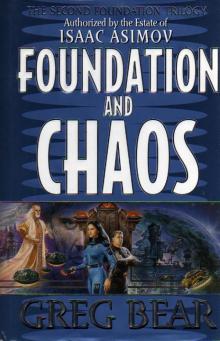 Foundation and Chaos
Foundation and Chaos Halo: Silentium
Halo: Silentium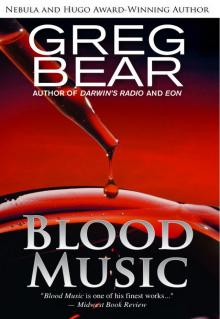 Blood Music
Blood Music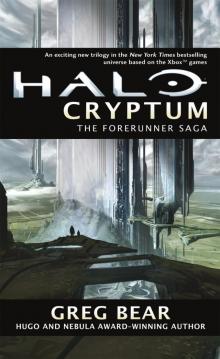 Halo: Cryptum
Halo: Cryptum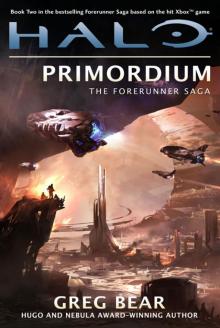 Halo: Primordium
Halo: Primordium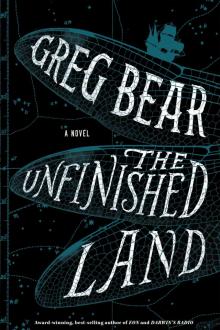 The Unfinished Land
The Unfinished Land Hardfought
Hardfought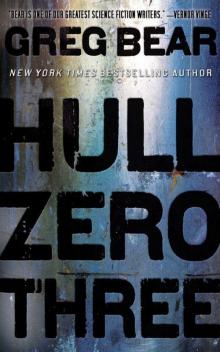 Hull Zero Three
Hull Zero Three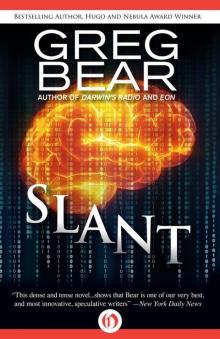 Slant
Slant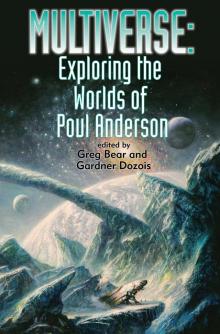 Multiverse: Exploring the Worlds of Poul Anderson
Multiverse: Exploring the Worlds of Poul Anderson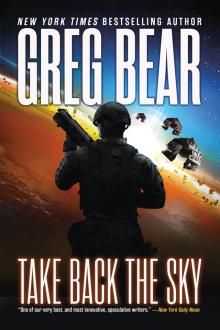 Take Back the Sky
Take Back the Sky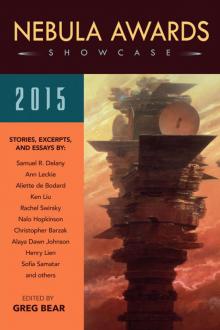 Nebula Awards Showcase 2015
Nebula Awards Showcase 2015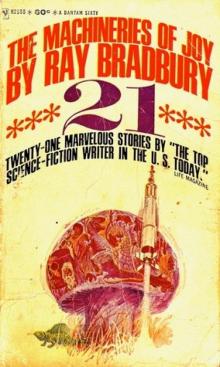 Machineries Of Joy
Machineries Of Joy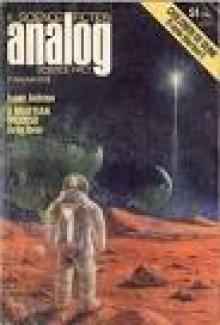 A Martian Ricorso
A Martian Ricorso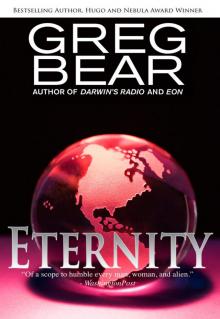 Eternity
Eternity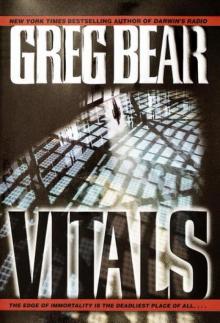 Vitals
Vitals The Infinity Concerto
The Infinity Concerto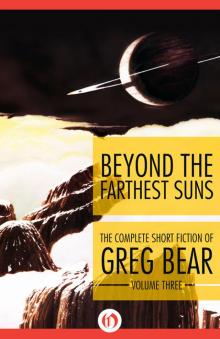 Beyond the Farthest Suns
Beyond the Farthest Suns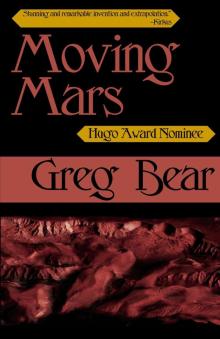 Moving Mars
Moving Mars Quantico
Quantico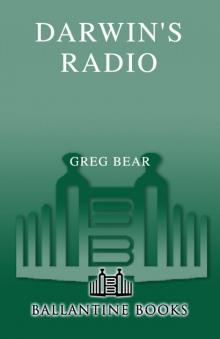 Darwin's Radio
Darwin's Radio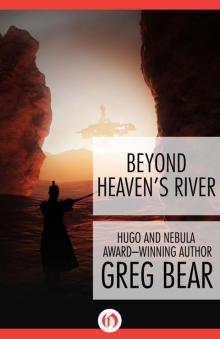 Beyond Heaven's River
Beyond Heaven's River Star Wars - Rogue Planet
Star Wars - Rogue Planet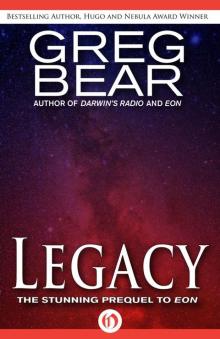 Legacy (Eon, 1)
Legacy (Eon, 1)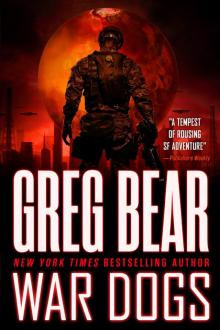 War Dogs: Ares Rising
War Dogs: Ares Rising Sisters
Sisters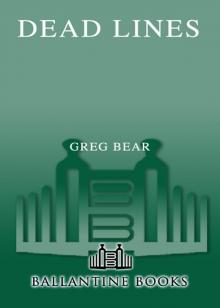 Dead Lines
Dead Lines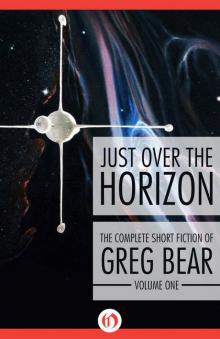 Just Over the Horizon (The Complete Short Fiction of Greg Bear Book 1)
Just Over the Horizon (The Complete Short Fiction of Greg Bear Book 1) Eon (Eon, 2)
Eon (Eon, 2) Venging
Venging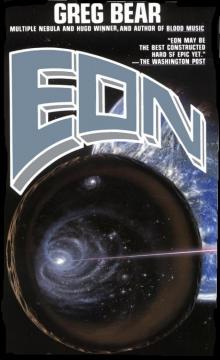 Eon
Eon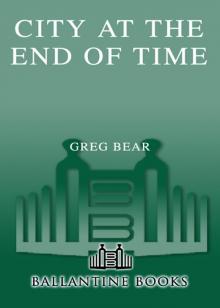 City at the End of Time
City at the End of Time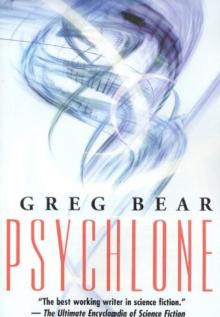 Psychlone
Psychlone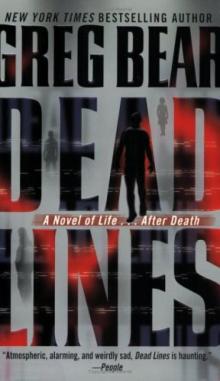 Dead Lines, A Novel of Life... After Death
Dead Lines, A Novel of Life... After Death Eternity (Eon, 3)
Eternity (Eon, 3)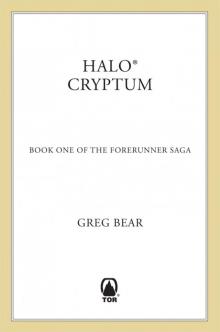 Cryptum
Cryptum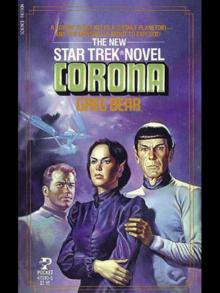 Corona
Corona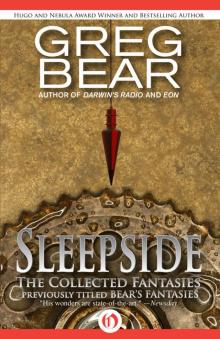 Sleepside: The Collected Fantasies
Sleepside: The Collected Fantasies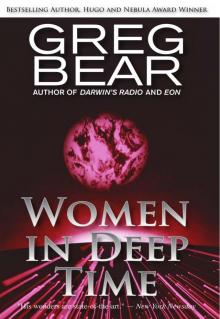 Women in Deep Time
Women in Deep Time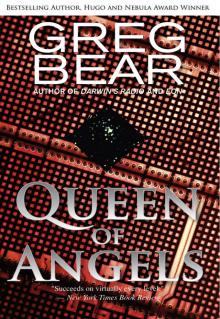 Queen of Angels
Queen of Angels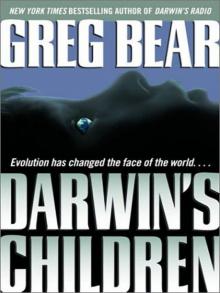 Darwin's Children
Darwin's Children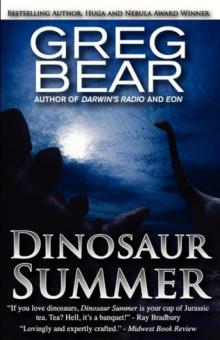 Dinosaur Summer
Dinosaur Summer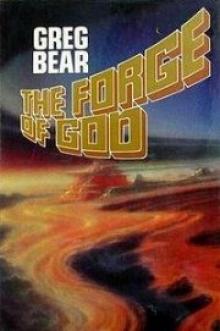 The Forge of God tfog-1
The Forge of God tfog-1 Foundation and Chaos f-9
Foundation and Chaos f-9 Star Wars: Rogue Planet
Star Wars: Rogue Planet The Forge of God
The Forge of God Mariposa
Mariposa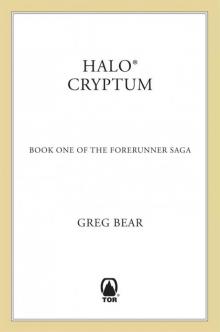 Halo: Cryptum: Book One of the Forerunner Saga
Halo: Cryptum: Book One of the Forerunner Saga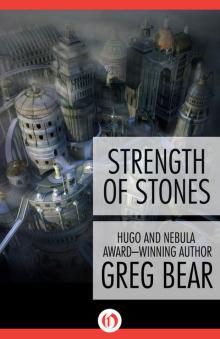 Strength of Stones
Strength of Stones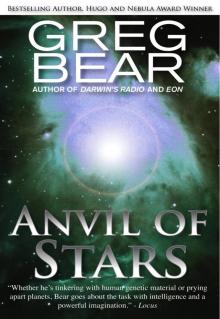 Anvil of Stars
Anvil of Stars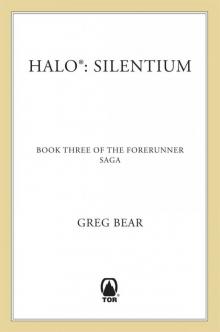 B00AQUQDQO EBOK
B00AQUQDQO EBOK Anvil of Stars tfog-2
Anvil of Stars tfog-2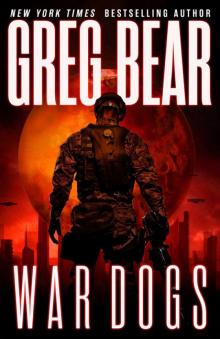 Ares Rising 1: War Dogs
Ares Rising 1: War Dogs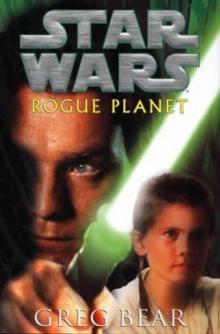 Rogue Planet (star wars)
Rogue Planet (star wars) The Machineries of Joy
The Machineries of Joy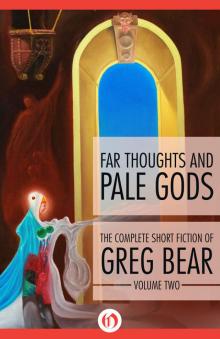 Far Thoughts and Pale Gods
Far Thoughts and Pale Gods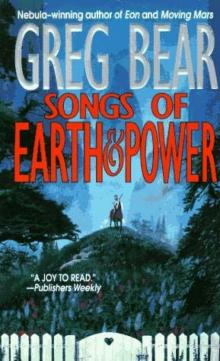 Songs of Earth and Power Omnibus
Songs of Earth and Power Omnibus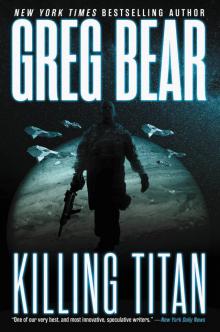 Killing Titan
Killing Titan Darwin's Radio d-1
Darwin's Radio d-1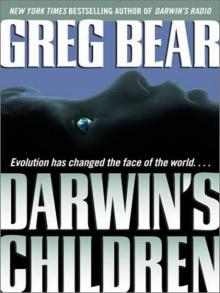 Darwin's Children d-2
Darwin's Children d-2